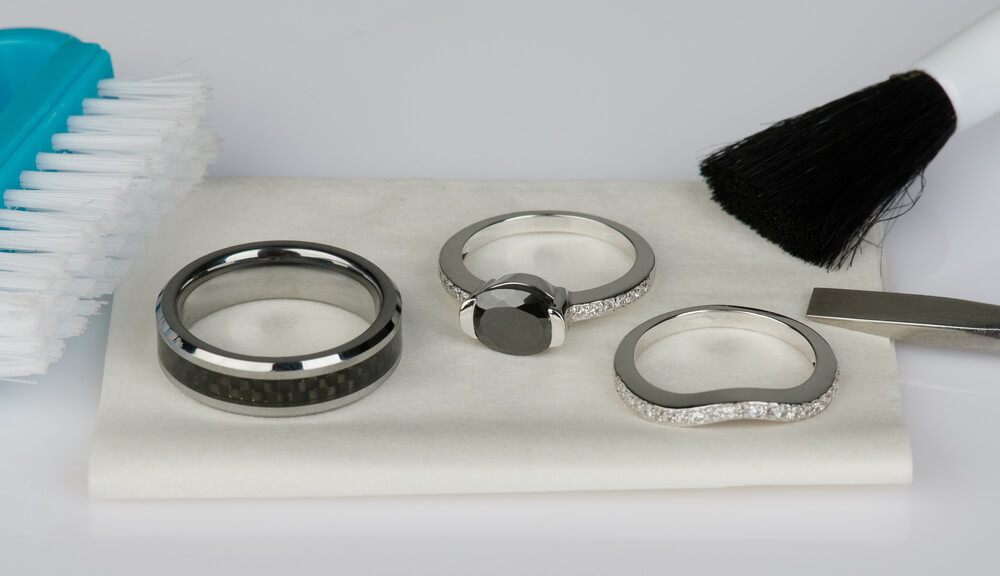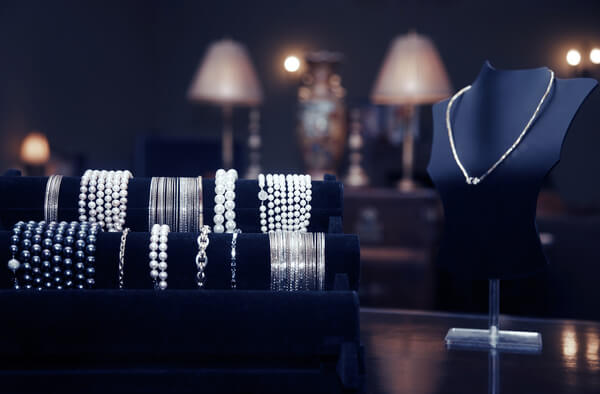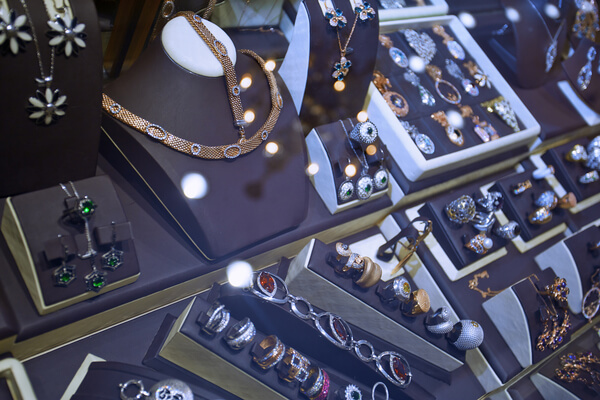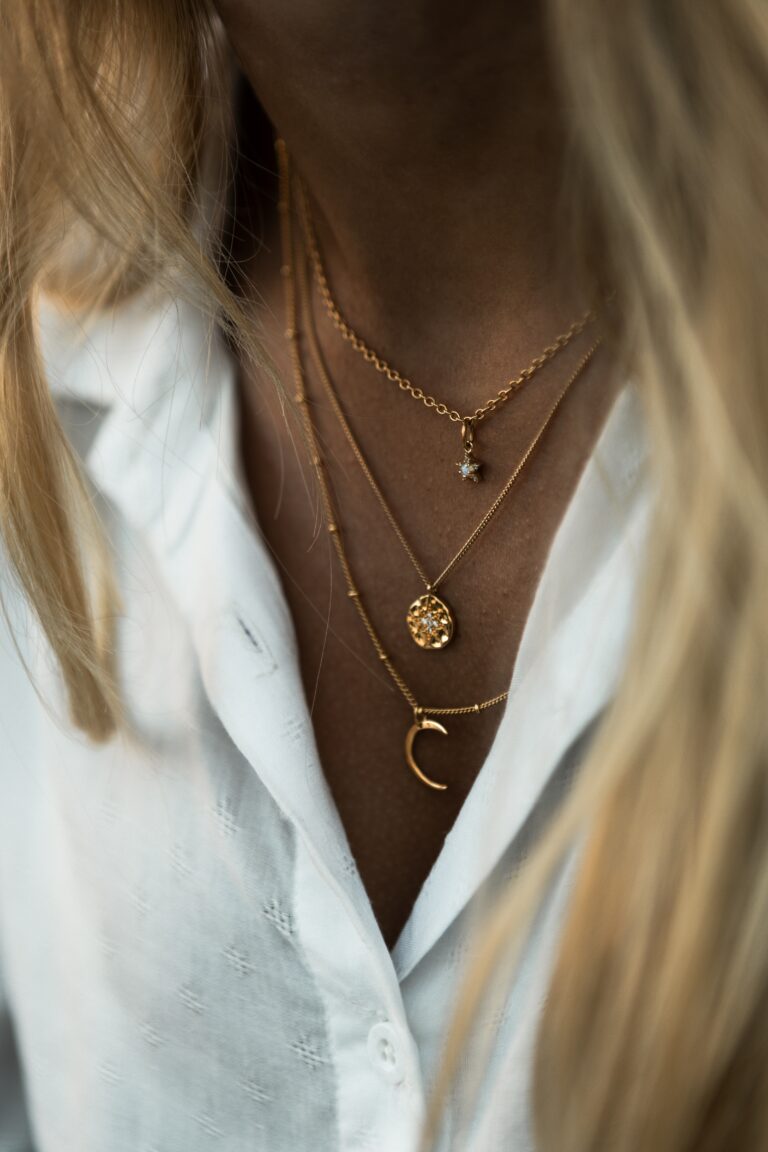Introduction: Overview of Silver Tarnish
Silver tarnish is a common problem for many jewelry owners, but it doesn’t have to be. If you know how to prevent silver tarnish, you can keep your jewelry looking bright and beautiful for years to come. Let’s take a look at what silver tarnish is, why it happens, and how you can prevent it.
What Is Silver Tarnish?
Silver tarnish is the dark discoloration that forms on the surface of silver due to oxidation. This oxidation occurs when metal particles in the air come into contact with the silver’s surface and react with it. The most common cause of this reaction is exposure to sulfur-containing compounds that are often found in air pollution or in products like rubber bands, latex gloves, and even certain foods.
Silver tarnish can range from yellow-brown to black in color depending on the severity of the oxidation process. It generally starts as a light gray hue before gradually darkening over time if left unchecked. Tarnishing is an entirely natural process and will eventually happen to all silver items, no matter how well they are cared for.
How To Prevent Silver Tarnish
The best way to protect your silver from tarnishing is by keeping it away from environments that contain sulfur or other chemicals. Store your jewelry in an airtight container such as a sealed plastic bag or a jewelry box with a tight lid. Keep the container away from humid areas like bathrooms and basements, and make sure it’s not exposed to direct sunlight either.
Cleaning your jewelry regularly with a soft cloth will also help keep the tarnish at bay. Additionally, using anti-tarnish agents such as silica gel packets or special cleaners designed to combat tarnishing can help protect your jewelry even further. Finally, applying a thin layer of wax or lacquer every few months will provide an extra layer of protection against corrosive elements in the environment.

Removing Tarnish from Your Silver Items
If you already have some tarnish buildup on your items there are several ways you can remove it yourself. One option is to use a commercial polish specifically designed for removing tarnish from sterling silver items; these polishes usually come in liquid form as well as in pre-treated impregnated cloths that make cleaning easy and convenient.
Another option is to create a homemade cleaner using baking soda mixed with water; simply apply this mixture onto the affected areas using a soft cloth or brush before rinsing off with warm water and drying thoroughly with another soft cloth.
For more stubborn stains, try mixing equal parts salt and white vinegar into a thick paste before applying it to the affected area; leave this paste on for 10 minutes before scrubbing it off with an old toothbrush before rinsing off with warm water and drying thoroughly again with a soft cloth.
Are There Health Risks Associated with Silver Tarnish?
Tarnished silver is not toxic or harmful to humans or animals. The tarnish itself does not contain any substances that can be absorbed through the skin or ingested. However, there may be some risks associated with breathing in particles of silver sulfide from tarnished pieces of jewelry or other items made from silver.
Inhaling these particles could potentially cause respiratory issues such as asthma or bronchitis if exposed to large amounts over an extended period. It’s important to note that this is highly unlikely unless you are working in an environment where large amounts of silver sulfide particles are present regularly.
Another potential health concern associated with silver tarnish is nickel allergy which affects about 15-20% of people worldwide. Nickel allergies cause rashes and irritations when exposed to nickel-containing items such as jewelry made from sterling silver alloyed with nickel or plated with nickel. Therefore if you experience any reactions after wearing your sterling silver items, consult a doctor immediately. Additionally, look for hypoallergenic alternatives such as sterling silver without nickel alloyed into the mix.
What You Need to Know About Prolonged Exposure to Silver Tarnish
If you own silver jewelry or other silver items, then you’ve no doubt seen the effects of silver tarnish. The discoloration that appears on silver after long-term exposure to moisture, humidity, and air can make your favorite pieces look dull and lifeless. But what are some of the effects of prolonged exposure to silver tarnish? Here’s a closer look at how oxidation affects your treasured items.

Discoloration and Diminishing Luster
One of the most obvious effects of prolonged exposure to silver tarnish is a change in color due to oxidation by environmental elements such as oxygen and sulfur. As these particles react with the metal, they cause a layer of black or gray patina (tarnish) to form on the surface. This discoloration can diminish the luster of the metal, making it appear dull or drab. While this may not be an issue for some pieces—such as antique jewelry—it can be unsightly for others.
Thinning Metal
Another effect of prolonged exposure to silver tarnish is thinning metal caused by corrosion from environmental elements such as oxygen, sulfur, and chlorine. In addition, acidic skin oils can also contribute to corrosion when they come into contact with certain metals such as sterling silver (which is composed of 92.5% silver). Corrosion causes the metal to oxidize and form a layer of black or gray patina (tarnish), which can eventually result in thinning metal if left unchecked over time.
Damage to Precious Stones
Prolonged exposure to tarnished metals such as sterling silver can also damage precious stones like diamonds and sapphires that are set in jewelry. When exposed to tarnished metals for extended periods, these stones can become discolored or lose their sparkle due to oxidation from environmental elements or acidic skin oils reacting with the metal setting. Therefore, you must take steps to protect your precious gems from tarnished metals by regularly cleaning them with a soft cloth and polishing solution recommended by your jeweler or gemologist.

Polishing Silver: What You Need to Know
Silver is a beautiful metal that can brighten up any room, but to keep it looking its best, it needs to be properly polished. Unfortunately, silver polishing can be tricky if you don’t know what you’re doing. If done incorrectly, it can leave your silver-streaked and smudged. Let’s take a look at what proper polishing looks like and how you can avoid accidentally damaging your silver pieces.
The Benefits of Properly Polished Silver
Properly polished silver has many benefits beyond just being aesthetically pleasing. It helps protect against tarnish and corrosion due to oxygen exposure, and if done correctly will last for years without needing to be re-polished. Regularly cleaning your silver also helps maintain its value should you ever want to sell it or pass it down as an heirloom.
How To Properly Polish Silver
To properly polish your silver pieces, you’ll need a few supplies such as soft cloths and/or cotton balls, mild dishwashing liquid, baking soda or aluminum foil, white vinegar or lemon juice (for oxidized jewelry), and toothpaste (for heavily tarnished pieces). Start by cleaning the piece with a mild dishwashing liquid and warm water before drying it with a soft cloth. For heavily tarnished items, try mixing baking soda or aluminum foil with warm water to create a paste that you can then rub over the surface of the item using a soft cloth.
For light oxidation (discoloration) on jewelry items like rings or necklaces, dip them in white vinegar or lemon juice for 10 minutes before wiping them clean with a soft cotton ball. For heavily tarnished pieces that have been neglected for years (or generations!), try using toothpaste as an abrasive cleaner—but be sure not to use hard-bristled brushes as this could cause scratches on the surface of the item! Once finished polishing your silver piece(s), rinse thoroughly with lukewarm water before buffing dry with a soft cloth for extra shine!


